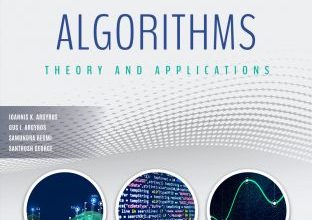Google Apps Script Playground: Explore Coding with 120 Interactive Exercises for All Skill Levels


Google Apps Script Playground: Explore Coding with 120 Interactive Exercises for All Skill Levels
English | May 9, 2024 | ISBN: N/A | ASIN: B0D3TZXG39 | 215 pages | EPUB | 4.09 Mb
“Coding with Google Apps Script: A Step-by-Step Journey”, authored by Laurence Lars Svekis, serves as a comprehensive guide for anyone keen on mastering Google Apps Script (GAS) through interactive and practical learning. Designed to cater to all skill levels, this book guides readers through a series of 120 interactive exercises that gradually build from basic to advanced applications of GAS.
The book begins with a thorough introduction to GAS, focusing primarily on its integration with Google Sheets. Early chapters aim to familiarize readers with the Google Apps Script environment, teaching how to create simple scripts that can automate tasks within Google Sheets, such as logging data, modifying cell appearances, and inserting dynamic data like the current date. Each exercise is detailed step-by-step, offering readers the chance to understand the fundamentals of scripting, including how to interact with various spreadsheet elements and execute basic functions.
Progressing through the book, Svekis introduces more complex scripting scenarios that involve handling external data. Readers learn to fetch and display real-time data from public APIs, enhancing their Google Sheets with up-to-date information. This section is particularly valuable for intermediate users interested in API integration and JSON data processing, which are crucial for developing interactive spreadsheets that react to external data sources.
The book also dives into advanced data manipulation strategies where readers explore dynamic data management. This includes creating automated processes that respond to data changes and integrate Google Sheets with other Google services like Google Drive and Gmail for comprehensive data management solutions. These exercises prepare readers to handle complex tasks, automate workflows, and manage data across platforms efficiently.
One of the standout features of this book is its commitment to practical application. Each chapter includes tasks that encourage readers to apply learned concepts to real-world scenarios. This approach not only solidifies understanding but also enhances the reader’s ability to solve practical problems using GAS.
In the later chapters, Svekis explores sophisticated automation and reporting techniques that help streamline communication and reporting processes within organizations. The book outlines how to generate detailed reports, manage emails, and create interactive dashboards directly within Google Sheets. This section is especially beneficial for users looking to enhance productivity and implement effective data communication strategies.
Throughout, “Coding with Google Apps Script: A Step-by-Step Journey” maintains a clear, informative tone, making complex concepts accessible. The book is richly supplemented with code snippets, illustrative examples, and insights that offer a deep dive into the capabilities of Google Apps Script.





